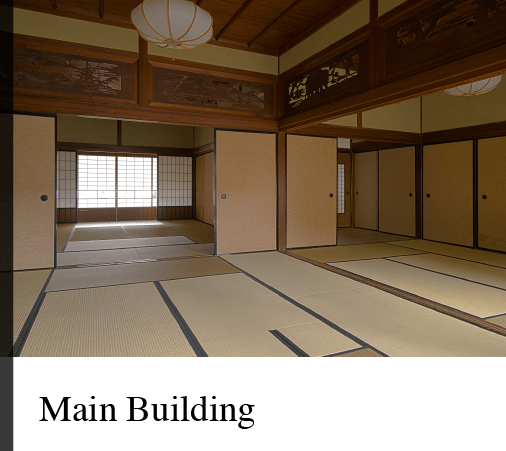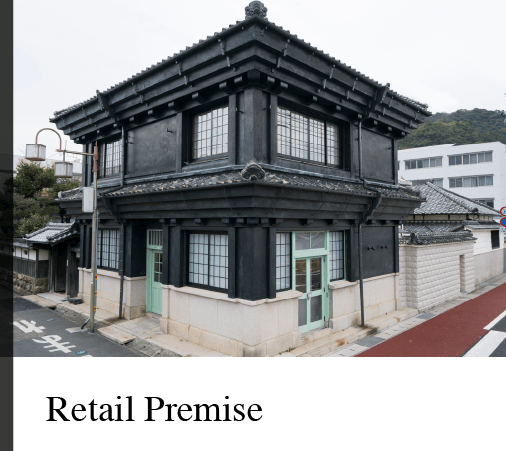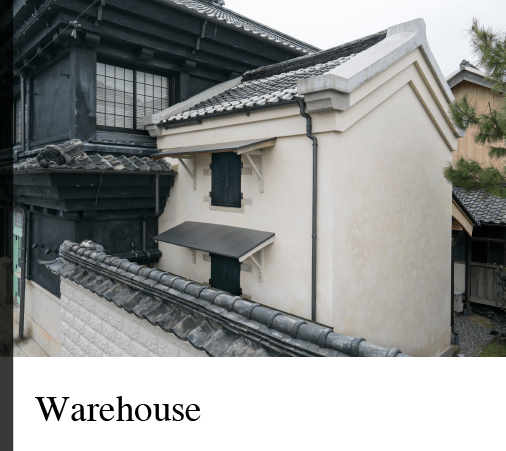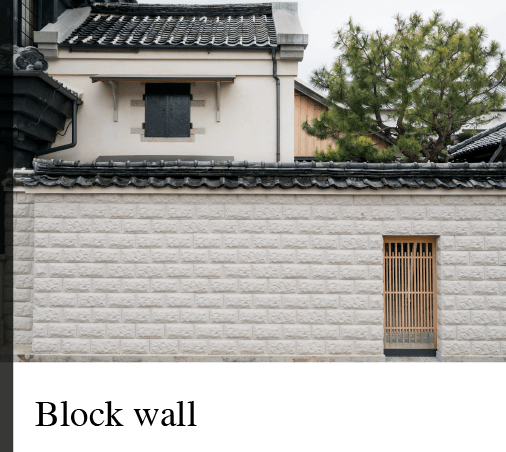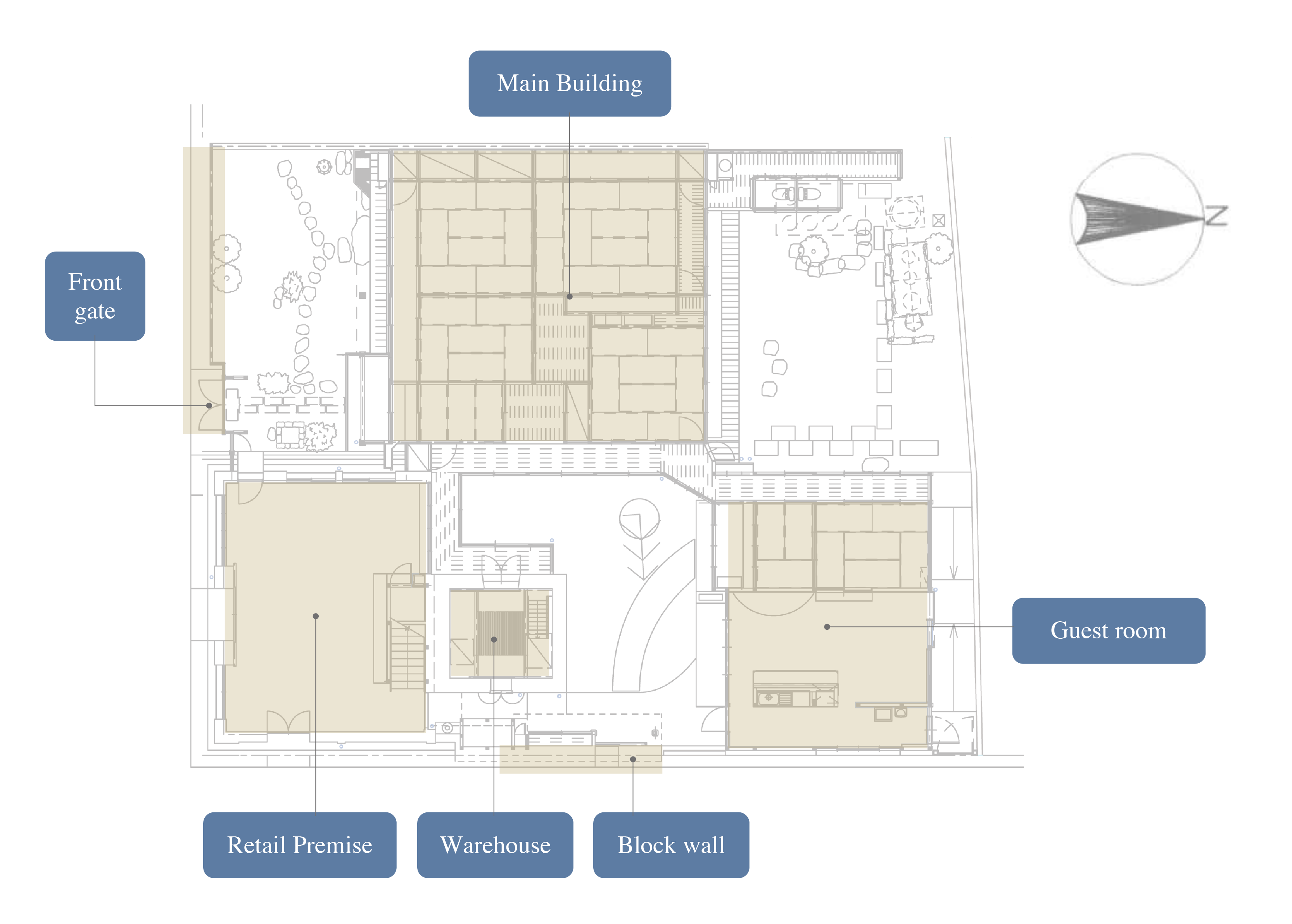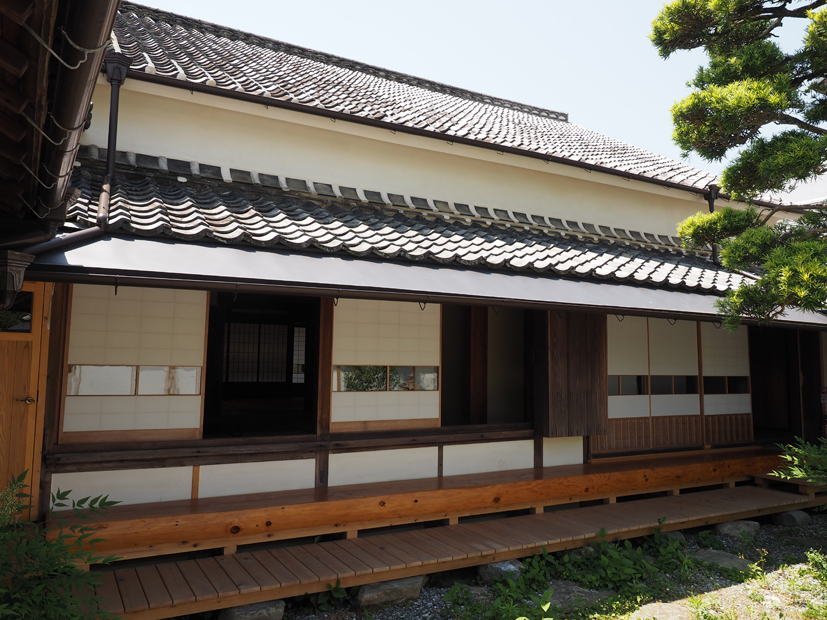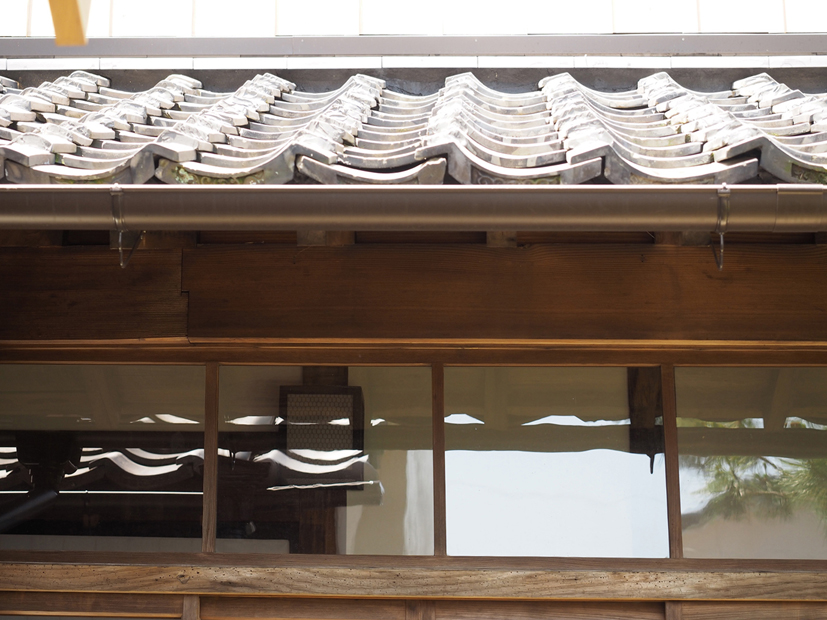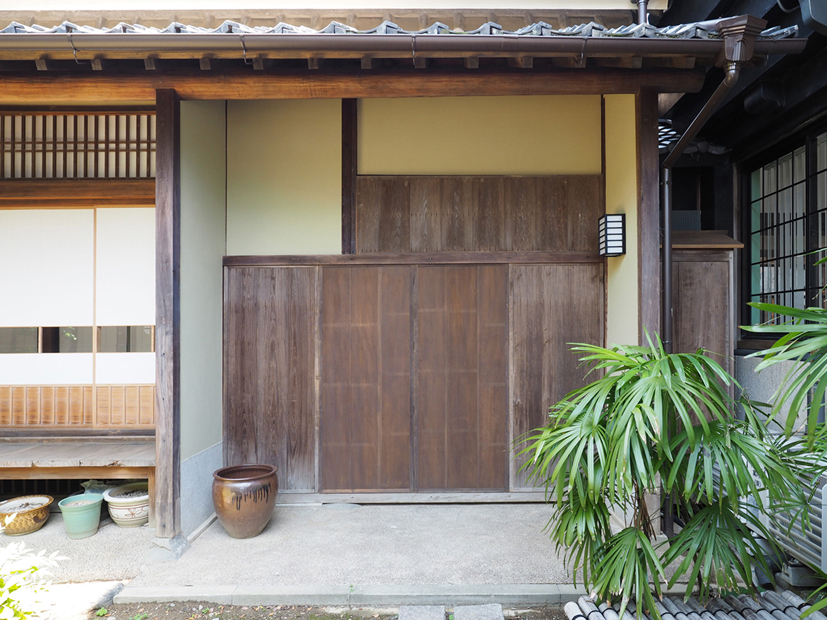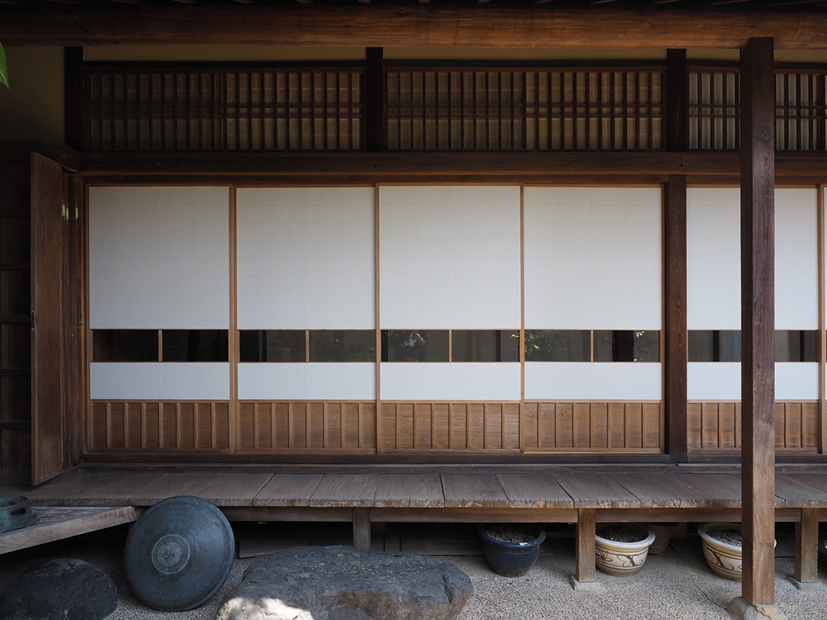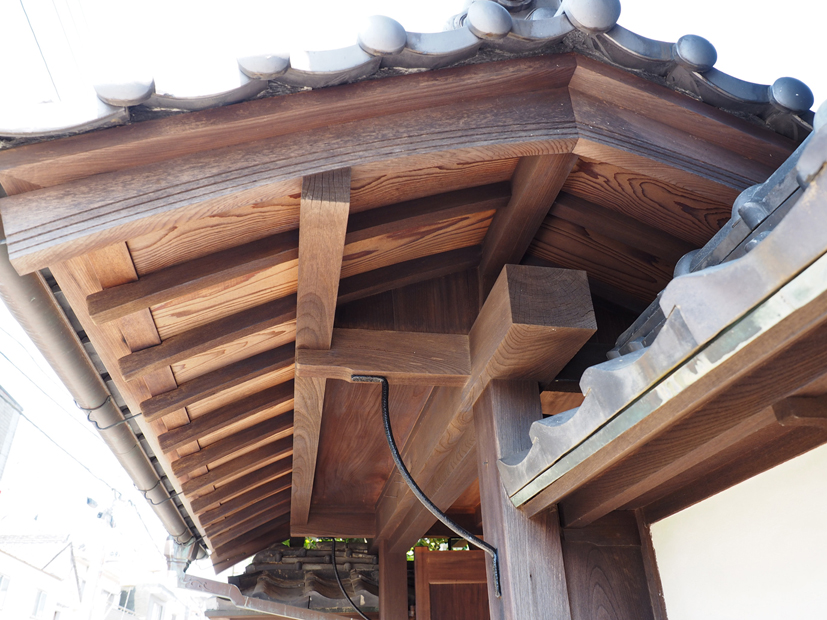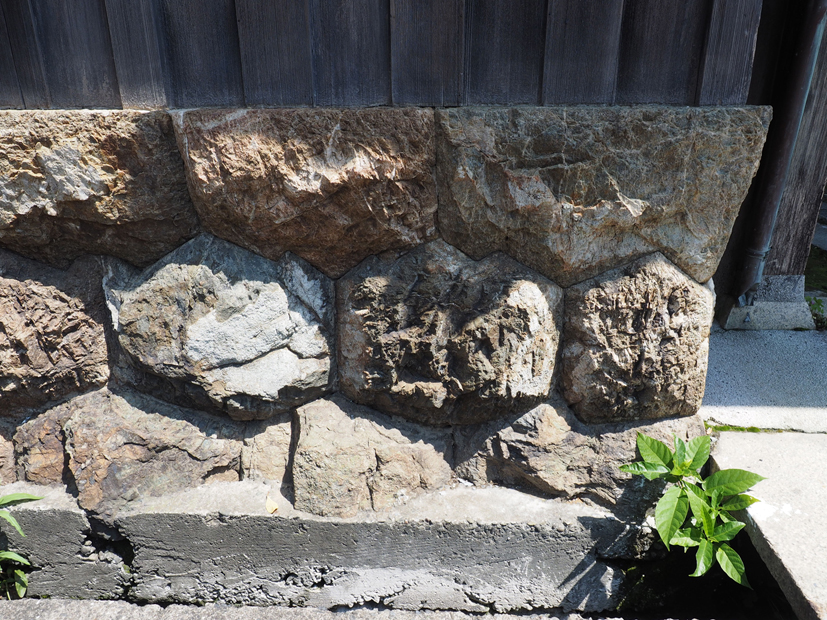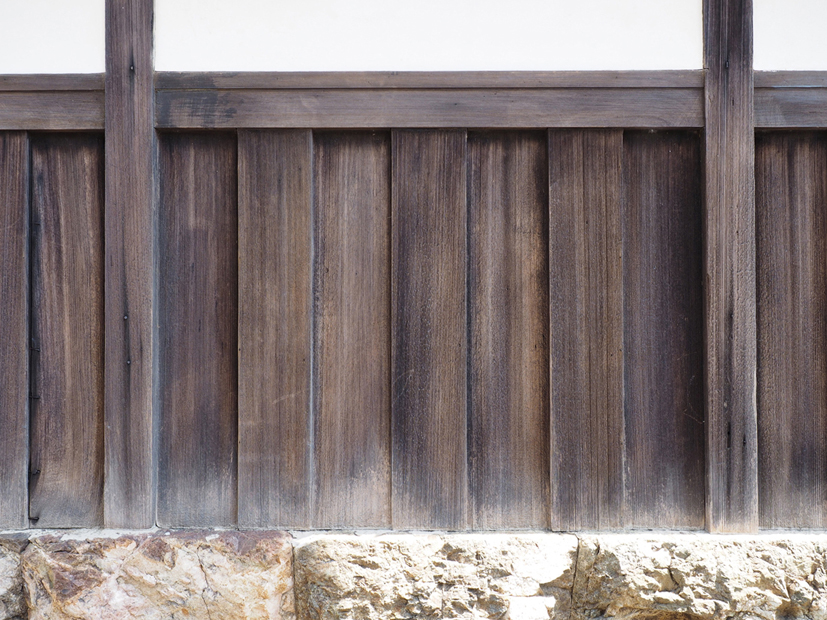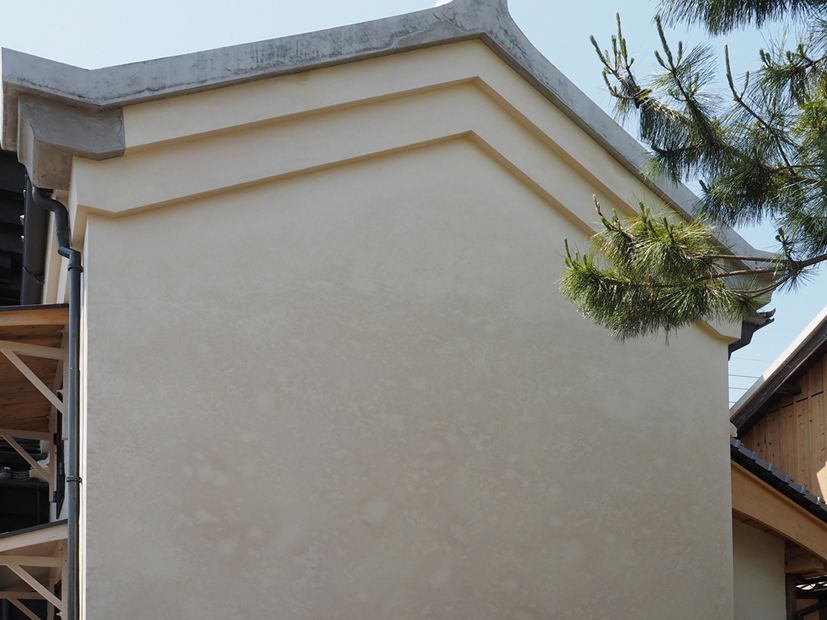Miura store, which is painted-double story wooden house, is a representative merchant architecture that is known as a construction built in Kochi in the middle of Taisho period and also introduced in a book “Japan Modern Architectural Directly” (edited by Architectural Institute of Japan). Eaves with thick plaster painted in all black-colored are very unique and high three-layered eaves are extended to four directions like first and second floor of castle walls, and faded black walls emphasize the stateliness of this architecture and make visitors feel its dignity. Before the war, it is known that Miura house was trading Japanese traditional handmade paper and its raw material such as hybrid mulberry tree and oriental paperbush to even the Korean Peninsula. Susaki, as a naturally and geographically good harbor, flourished to be a distributing center, and Miura store was one of wealthy merchants. Miura house was built at the corner of the street and prospered by selling paper and woods produced around Susaki. High lacunar with plaster still retains the relic of wealthy merchant.
This is a gabled, one-storied 9.91m X 11.7m, and Sankawarabuki (ceiling technique invented in Edo Period) architecture.
Adjacent rooms are located in both south and north side, and roofs for those rooms are formed with right roofing tiles and left roofing tiles divided from the roof of main building. South side room under the eaves is made of fine Japanese Cypress, a famous product in Tosa area, and also its column and post are made to be solid carcasses.
Since Former Miura house had connections with Kyoto, Osaka, and Kobe area for trading timbers produced in Shimanto watershed area, this building was utilized as a guest room and party room. This merchant architecture, remaining design and structure as a living space, is a precious building indicating the relic of trade in Taisho period.
Retail Premise is 8.67m X 6.925m wide Two-story wooden building with the characteristics of thick mortar and Sankawarabuki (ceiling technique invented in Edo Period). This building used as a retail promise has two entrances and its outer wall is coated all with burnt pine ink finishing like a mirror.
Retail Premise faces up to the corner of intersection, and it’s rare to see the color contrast with pertaining white warehouse located north so that gives great influence on the scenery from the view of intersection. This is the central building in this site and also one remaining the relic of that time strongly.
Warehouse is 4.535m X 3.55m wide gabled and reinforced-concreted building with 2 stories. Due to its gabled roof elongated to north and south, roof is reinforced with left-oriented tile to deal with south wind, right-oriented tile on east side roof, and left-oriented tile on west side roof.
Tosa plaster finishing covers all north wall of warehouse without any partition between first and second floor except of warehouse’s entrance.
In the warehouse, iron door is put at the internal entrance due to the iron cashbox remained in the first floor.
This one-story wooden room is 9.91m X 6.925m wide with Sankawarabuki (ceiling technique invented in Edo Period) roof. This room is composed of a reception room, veranda, and kitchen. The ceiling of reception room is formed with Saobuchi technique (Ceiling technique that wood sticks are set up every 30-60cm wide and put rift-sawn timber boards on them), and kitchen ceiling which is constructed by western-styled king post truss set every 1.8m wide in Koyagumi technique (framework underpinned a roof), creating column-free space.
Front gate, leading from public road to the entrance of main building, is 1.8m wide and also inward opening in form of Yakuimon (a type of gate which underpins gabled roof with 2 main and 1 sub-main column). Framework of column and board material is mostly made of fine unsawn timber such as zelkova.
Tuijibei (Fence, made of clay, used for separating the land property. It is usually covered by a roof) is 8.1m long and private gate is also placed.
※1 Roof tiles separating from the middle are frequently seen at the coastal villages in Kochi Prefecture. This is Tosa’s traditional roofing method to deal with east and south-bound gale.
※2 Nuriyazukuri (type of house composition which has relatively thin wall but effective to prevent fire), the house composition style distributed widely, is named so because of plastered columns. In general, its color is white, but for former Miura house, plaster is mixed with soot to make its color black.


